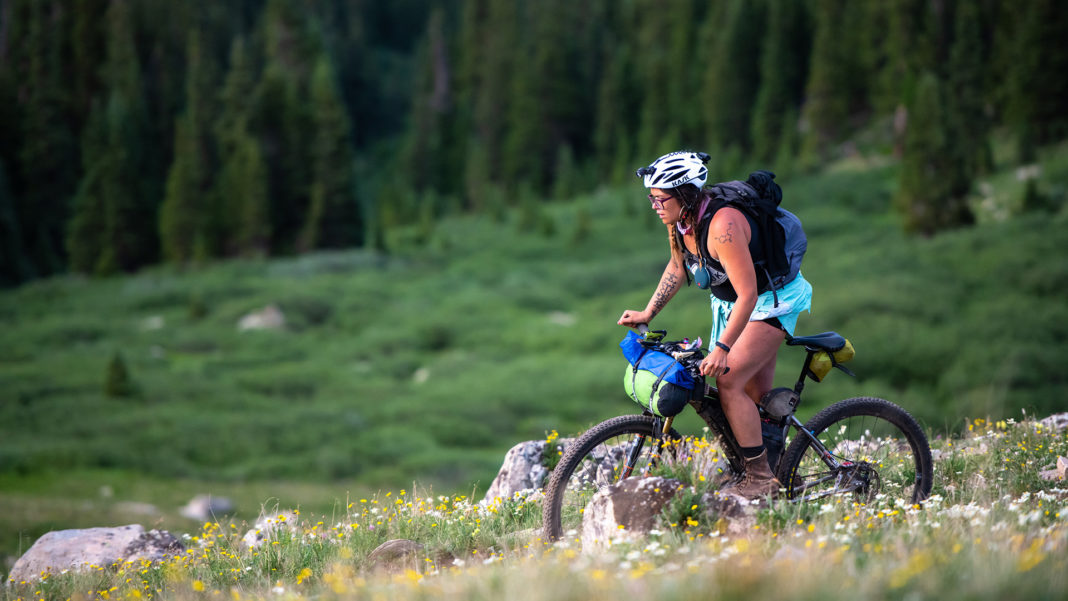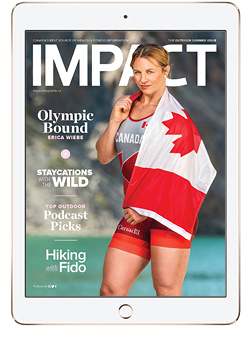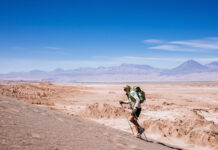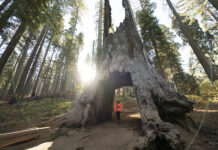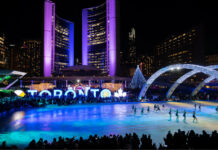The concept of bikepacking has been around for as long as people have been riding bikes, but the term is quickly becoming more popular. Bikepacking is, essentially, strapping everything you need to spend the night (or multiple nights) outside, onto your bicycle. It’s the perfect hybrid between bike touring and backpacking. It combines some of the simplicity of hiking with the thrill of mountain biking.
Maybe you’ve heard of the term, maybe you’ve even gone so far as to think about giving a try for yourself or your family. Anyone with a capable bike can head out for a bikepacking adventure of their own. The beautiful thing about bikepacking is that no two bikes are the same. Everyone has their own unique way of carrying gear on their bicycles; there is no one right way to do it. Some people use racks, some use bags specifically made to strap onto one’s bike, and others use dry bags and Voile straps to cinch everything onto their bike.
Be prepared
You should also have the proper gear to keep you safe in the variety of conditions that always seem to present during a bike adventure. It’s crucial to know how the climate changes where you are traveling. In lower elevation areas, it’s unlikely that a temperature change of 15 C will occur in a matter of hours, but it’s best to be prepared regardless. I recommend bringing several layers, an insulated down coat and a rain jacket. Gloves and extra socks have been a highlight on past cooler trips.
There are several different types of shelters to use on a bikepacking trip. Minimal tents pack down well, especially if you can share the load with another person. Some people use bivy sacks, essentially a dry, waterproof tube you shimmy your sleeping bag into. Others use hammocks and a tarp. There are so many options.
Choose a route
There are several things to consider before heading out on your first bikepacking trip. First and foremost, you need to envision a route that you would like to ride that is within your riding ability. Today, there are many resources available for those who want to follow someone else’s route. Sites like www.bikepacking.com have a collection of rides and routes ranging from over-nighters to multiple day trips. They offer suggestions for navigating the route. You may also craft your own route using maps, Google Earth and other suggestions from people who ride in your area. After you have a route in mind, it’s time to think about a few details.
What to eat?
Packing food for these trips is the hardest decision I make. I love bringing real food and cooking over a nice fire at the end of the night. I enjoy beans, lentils, tortillas, potatoes, onions, garlic and more. Some people bring freeze-dried meals or other dehydrated foods.
Bikepacking allows you to cover nearly twice as much ground as you would if you were hiking, but still allows you to go slow enough to take in the scenery. I love the built-in breaks that riding a bike provides (coasting!). Learning to dial in your “kit” (everything that you’ve packed) is part of the joy. You learn quickly what you don’t need (three pans), do need (extra socks) and eventually get to the point of being minimalist (carrying 30 pounds of gear + food + water is a workout and you find ways to do without).
Take care of your ride
The concept of bikepacking has been around for as long as people have been riding bikes, but the term is quickly becoming more popular. Bikepacking is, essentially, strapping everything you need to spend the night (or multiple nights) outside, onto your bicycle. It’s the perfect hybrid between bike touring and backpacking. It combines some of the simplicity of hiking with the thrill of mountain biking.
Maybe you’ve heard of the term, maybe you’ve even gone so far as to think about giving a try for yourself or your family. Anyone with a capable bike can head out for a bikepacking adventure of their own. The beautiful thing about bikepacking is that no two bikes are the same. Everyone has their own unique way of carrying gear on their bicycles; there is no one right way to do it. Some people use racks, some use bags specifically made to strap onto one’s bike, and others use dry bags and Voile straps to cinch everything onto their bike.
Want to Give it a Try?
Pack up your gear and go for a ride on of these routes
B.C.
Englishman River Overnighter 50 km, out and back
You’ll start and end in the coastal town of Parksville. This route uses a mix of unpaved and singletrack on unceded K’ómoks First Nation land. You’ll get great views of the coastal range before heading inland toward Englishman River Falls Provincial Park for your camp spot.
Western Kettle Valley Railway 470 km, point to point
This point-to-point route offers up some of the Okanagan’s greatest hits. The majority of the route follows the Kettle Valley Rail Trail along with gravel forest service roads and a few pavement links. Distances between communities offer good lodging and resupply options.
BC Trail 1,200 km, point to point
Beginning in the Fraser Valley, this route uses mainly unpaved routes on its way to Fernie, B.C. it follows some of the course of the annual BC Epic race.
ALBERTA
Jewell Bay Overnighter 87 km, out and back hybrid
Beginning in Canmore, you get a bit of a warm up before the big climb up Skogan Pass. Camping is available at Jewell Bay backcountry site overlooking Barrier Lake in the Bow Valley Provincial Park.
The Audible: Cypress Hills 160 km, point to point hybrid
This inter-provincial route is best started in Elkford, Alta. Using mostly quiet gravel roads, you’ll be transported into the hills at Cypress Hills Interprovincial Park. Don’t forget to pack your star-gazing eyes; the park is an official dark sky preserve.
AR700 700 km, loop
This route follows the same path as the Alberta Rockies 700, a self-supported bikepacking event. Starting in Canmore, the route takes you over Highwood Pass, the highest paved road in Canada, continuing south along the front range before looping back north through B.C.
ONTARIO
Griffith Highland Overnighter 70 km, loop
This mellow route near Ottawa makes use of forest service roads. Do the ride in a day, or camp overnight at one of the crown land sites.
Central Ontario Loop Trail (COLT) 450 km, loop
Starting out in Fenelon Falls, riders generally do this loop clockwise, meaning that the waterfront is only about a 68-kilometre ride away. Check out Ontario’s second oldest lighthouse in Presqu’ile Provincial Park before the route loops back north and around.
BT700 760 km, loop
This ride starts just north of Waterloo and takes you on a grand tour of southwestern Ontario. If you like butter tarts, you’ll certainly be pleased with the route, which is situated in a region known for this pastry.
Photo by Eddie Clark
Read This Story in Our Outdoor Summer Digital Edition
Get outside and play!
We’ve covered DIY Bike Maintenance, Wildlife Travel, Open Water Swimming, Ultramarathon Training, Paddleboarding, Family Adventures, and Dogs and a Cat to watch on Instagram! Work out with Canada’s Top Fitness Instructors and be inspired by our Athletes with IMPACT.

